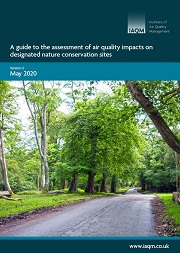Air pollution damage to protected wildlife sites is often overlooked due to the current emphasis on its effect on human health. This publication signposts the appropriate thresholds used by local authorities, the Environment Agency and other regulators to conclude that there will not be a significant effect. When these thresholds are exceeded, a suitability qualified and experienced ecologist must determine whether there is likely to be a significant effect on the habitat. The guide stresses the importance of air quality and ecology specialists working closely together.
There has been much litigation regarding how to assess the impacts on sites designated under European law. Recent court rulings have caused some confusion. New developments can increase in air pollution, but this does not always mean there will be a significant effect on a sensitive habitat.
The Chair of the working group, Dr Claire Holman, comments:
“The burden of air pollution on vulnerable habitats currently exceeds thresholds for harm across most of the country. New sources of pollution add to this problem. Today, IAQM has published advice for our members on how to assess the potential air quality impacts of new developments to ensure that our important habitats are protected.”
Originally published: June 2019
Republished: May 2020, v1.1


